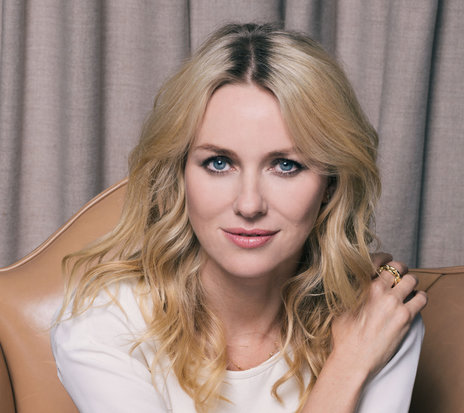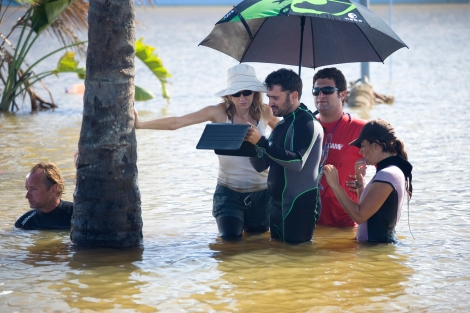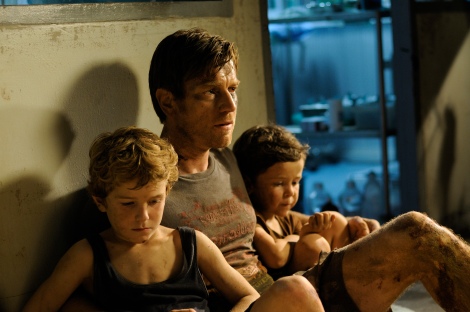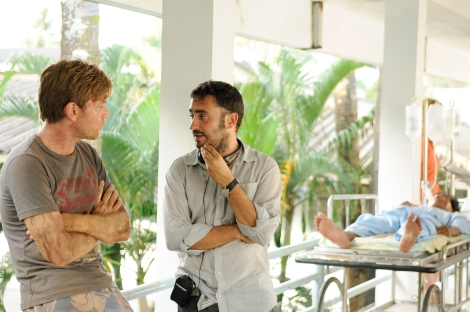This story appeared in the Nov. 14 issue of AwardsLine.
Naomi Watts plays the matriarch in The Impossible, the unbelievable story of a family reuniting after the 2004 Indian Ocean tsunami. Though Watts’ performance has been praised for the emotion she conveys onscreen, the actress says the role was also physically demanding. She recently spoke with AwardsLine about the challenges of working with real water and the moving meeting she had with her real-life counterpart before production commenced.
AWARDSLINE: When did you first hear about the story of Maria Belon in The Impossible?
NAOMI WATTS: My agent called and said, “There is this movie about the tsunami,” and my first reaction was, “How’s that going to work?” It just wasn’t like a slam-dunk, “Oh, I want to do that.” But then he mentioned the director (J.A. Bayona), and obviously, I knew The Orphanage and thought that film was brilliant. Meeting (Bayona and producer Belen Atienza), the level of passion that came through in that meeting was so intense and so wonderful—it was very seductive. I knew right away that I wanted to do it.
AWARDSLINE: You spent a good amount of time researching the role and talking with Maria. What kind of questions did you have for her?
WATTS: I was very nervous. I just thought, Oh, God. I’m an actor, and this is a woman who nearly died and nearly lost her entire family. Is this going to be an uncomfortable situation? I felt frozen with fear on how to begin that conversation. We had a couple of emails in the lead up, and then finally we got in a room together. I think she had her own anxiety about it, and we didn’t actually speak for a few minutes. We just looked at each other, and it’s, like, just one look in her eyes told her whole story, and we both just started to cry. It’s such a big event that’s taken place in her life, and to be retelling this story brings it all up again. She was completely open to talk endlessly and with great detail about every beat in the story. I was very fortunate to have that guidance. When you’re making a film, it’s very easy to get caught up in the process, but we were always grounded by this very real thing that took place. Not just Maria. Every time you walked on the set there were hundreds of extras who were telling their version of their story. It was all deeply moving.
AWARDSLINE: How much time did you spend in rehearsals?
WATTS: With Ewan (McGregor), I didn’t have any rehearsals, but with Tom (Holland), we had about 3½ weeks together, and I just loved it. I went home at the end of the first day of the rehearsal and told Liev (Schreiber, her husband) how much I loved the director because I thought his way of doing things was just brilliant and fun. (Bayona) had us sit down in front of each other and draw each other. It felt kind of goofy and silly—particularly because neither of us can draw. (Laughs). But it was just, like, “Let’s do this. Let’s hang out.” (We were) free to explore weaknesses, strengths, whatever. It was (about) creating a forum so that we both felt completely safe and bonded and could have this family history.
AWARDSLINE: You shot the water sequences in a water tank in Spain—what was that like?
WATTS: Working with water is one of the more difficult things to do on film, and it certainly lived up to its reputation. But it was a very well-planned, worked-out science. They had this gigantic pool that had currents running both ways, and you were strapped into these sort of giant flowerpots, and you would just be forced to move with the current, against the current. Tom enjoyed it and thought it was like going to the water park. Me? No, not so much.
The underwater stuff was incredibly difficult, and I did not like that at all. It’s always nerve-wracking holding your breath, and obviously, the longer you hold it, the better the shot’s going to be so you always want to try to get the best stuff. But we were anchored into a chair (with) weights on us to keep us down. You had the oxygen tank right there up until you rolled, and you’d push it away and then the chair starts spinning, and you have to do all your arm-acting and head-flipping. There was one point when I was about to get out of the chair, and I couldn’t get out. It was a technical problem, and it really freaked me out. I remember being really angry when I came out of the water because it just made me panic, and that’s the emotion that came out of me. And it’s funny because when Juan Antonio had me resurface in the movie and I’m holding onto that tree and I can’t see any member of my family, he had me shouting and screaming and I didn’t quite understand it. I kept thinking, Wouldn’t I just be exhausted and terrified? It





